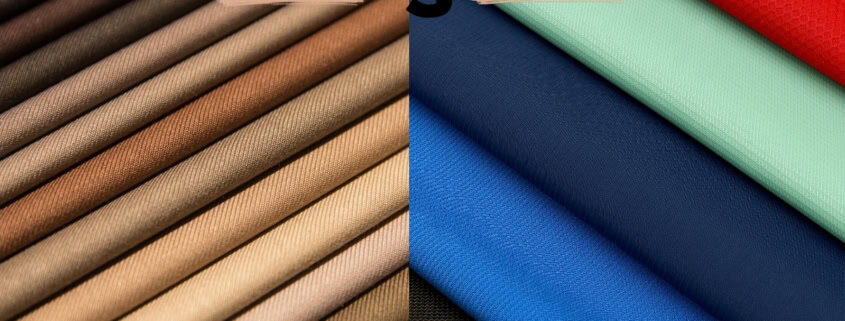Polyester vs. Cotton: The Right Material for Custom Patches
in Custom Patches, Patch Materials, PolyesterThe choice between cotton and polyester fabric for custom patches is a nuanced decision that greatly impacts the quality and durability of the patch type. Cotton is renowned for its softness and breathability, providing a comfortable feel against the skin, yet it presents challenges such as wrinkling and shrinkage. Conversely, polyester offers exceptional durability and resistance to fading, making it suitable for items subjected to frequent wear. However, the emergence of blended fabrics raises further questions about peak performance. What considerations should inform your decision on fabric selection, and how might these factors influence the final appearance of the patches in the long run?
Cotton Vs. Polyester Fabric: Best choice for Embroidery Patches
When considering the ideal fabric for embroidery patches, the choice often narrows down to cotton and polyester, each presenting unique attributes that influence the final outcome of the embroidery project.
Cotton fabric vs polyester fabric involves a comparison of natural versus synthetic fibers, each with distinct characteristics that affect durability, texture, and application.
Cotton, being a natural fiber, is known for its softness and breathability. It absorbs moisture well, making it comfortable against the skin. However, cotton fabric may be prone to wrinkling and shrinkage, which can complicate the embroidery process, especially when precision is essential.
In contrast, polyester fabric is engineered for durability, resistance to fading, and ease of maintenance. Its dimensional stability guarantees that embroidered patches maintain their shape and vibrancy over time.
The blend of 65 polyester and 35 cotton fabric offers a middle ground, combining the softness of cotton with the durability of polyester. This hybrid fabric can provide enhanced strength while retaining some comfort, making it a popular choice for embroidered patches.
However, when comparing 100% cotton to polyester fabric, the latter generally offers superior longevity and resilience, especially for outdoor applications.
Ultimately, the decision between cotton vs polyester fabric for embroidery patches should be guided by the intended use and desired attributes of the final product.
Considerations such as exposure to the elements, washing frequency, and aesthetic preferences will help determine the most suitable fabric for your embroidery project.
Cotton Fabric Compared to Polyester in Terms of Nature
Examining the fundamental differences between cotton and polyester reveals significant contrasts in their nature, particularly regarding their origins and environmental impact.
Cotton is a natural fiber sourced from the cotton plant, making it biodegradable and more environmentally friendly. Conversely, polyester is a synthetic fabric derived from petroleum and natural gas, which involves energy-intensive production processes that contribute to environmental pollution.
Here are three key distinctions between cotton and polyester with respect to their nature:
- Sustainability: Cotton is renewable and biodegradable, while polyester is a non-renewable resource that contributes to plastic pollution.
- Comfort: Cotton fibers are soft and breathable, making it a preferred choice for apparel, especially in warm climates (cotton vs polyester outdoor fabric). Polyester, while durable, can feel less comfortable against the skin.
- Durability: Polyester fabric vs cotton fabric highlights that polyester is more resilient to wear and tear, retaining its shape and color even after multiple washes (100 polyester fabric vs cotton).
Polyester Twill Vs. Cotton Twill Fabric
The comparison between polyester twill and cotton twill fabric reveals distinct characteristics that influence their suitability for various applications. Polyester twill, a synthetic fabric, offers durability, resistance to wrinkles, and moisture-wicking properties, making it ideal for outdoor gear and activewear. In contrast, cotton twill, being a natural fiber, provides breathability, softness, and superior moisture absorption, which enhances comfort during wear.
When examining polyester twill vs cotton twill fabric, the differences in performance and care become apparent. Polyester twill is less prone to fading and shrinking, resulting in a fabric that maintains its appearance over time, even after multiple washes. This is particularly advantageous for products requiring longevity, such as uniforms and embroidered patches.
Conversely, cotton twill may require more careful handling to prevent shrinkage and maintain its integrity.
In the context of polyester fabric vs cotton blend, many manufacturers opt for hybrid fabrics to capitalize on the strengths of both materials. Blending these fibers can yield a fabric that combines the durability of polyester with the comfort of cotton, suitable for a wide range of applications. For example, spun polyester fabric vs cotton twill fabric can provide a balance between resilience and softness, appealing to consumers seeking functional yet comfortable clothing.
Lastly, the debate between microfiber polyester fabric vs cotton continues, with microfiber offering a smoother texture and enhanced moisture management, while cotton remains favored for its natural feel and skin-friendly properties. Selecting the appropriate fabric ultimately depends on the intended use and desired characteristics.
Spun Polyester Fabric Compared to Cotton Twill Fabric
Choosing between spun polyester fabric and cotton twill fabric involves understanding their unique attributes and applications. Each fabric has distinct characteristics that can influence both performance and aesthetic appeal in embroidery patches.
- Durability: Spun polyester is known for its remarkable strength, making it highly resistant to wear and tear. In contrast, while cotton twill is durable, it may not withstand heavy use as effectively as its polyester counterpart.
- Flammability: The flammability of fabrics is a critical consideration. A blend of 65% cotton and 35% polyester typically offers improved flame resistance compared to 100% cotton. This makes spun polyester an appealing choice for applications needing enhanced safety.
- Texture and Comfort**: Cotton twill is favored for its natural softness and breathability**, making it comfortable for direct skin contact. Spun polyester, while soft and resilient, may not provide the same level of comfort as cotton, particularly in warmer conditions.
In comparing belting cotton vs polyester fabric, spun polyester proves advantageous in applications where strength and moisture-wicking properties are paramount.
Conversely, cotton twill excels in comfort and breathability, making it suitable for casual wear and items needing softness.
Ultimately, the choice hinges on specific project requirements, including durability needs and desired tactile qualities, ensuring the best fit for your embroidery patch application.
Frequently Asked Questions
Can Cotton & Polyester Be Used in One Embroidery Design Simultanuesoly?
Yes, utilizing both fabrics in one embroidery design is feasible. This approach can enhance the aesthetic appeal and functionality.
Does Fabric Weight Affect Embroidery Patch Durability?
Fabric weight considerably impacts embroidery patch durability; heavier fabrics typically provide enhanced stability and resistance to wear, while lighter materials may be more prone to fraying and distortion, affecting durability.
What Is the Best Backing for Embroidery Patches?
The best backing for the stick is iron-on. It only takes a few seconds to heat press, and it does not require an entire embroidery shop setup.
How to Choose Thread for Polyester or Cotton Patches?
When selecting thread for embroidery patches, consider thread composition compatibility with the fabric, desired finish, and durability. Polyester threads offer strength and color retention, while cotton threads provide a softer, more natural appearance, enhancing overall design quality.
If you are doing patches outsourced, you do not need to stick to all this. Just tell your vendor to choose the best thread as per design type.

 Custom Patches Mania
Custom Patches Mania

Leave a Reply
Want to join the discussion?Feel free to contribute!